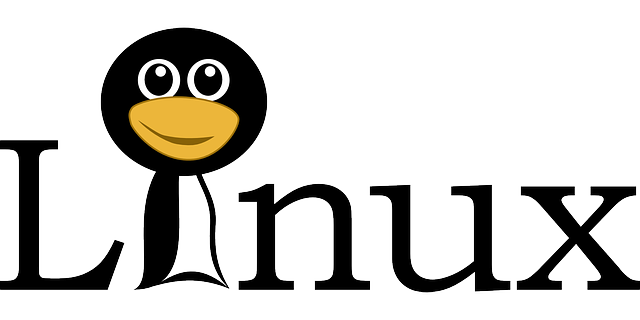- Management and support are key components for the efficient utilization of an operating system in cloud computing environments.
- Adopting security best practices like regular updates, disabling unnecessary services, and configuring firewalls are essential.
- TuxCare’s Enterprise Support for AlmaLinux offers several key benefits, making it an indispensable partner for managing AlmaLinux deployments.
AlmaLinux is a fully open-source Linux distribution with clear upgrade paths. It is a perfect operating system to allow for scalability – whether you are a startup, an established business, or trying to enter a new space. After the major change introduced with CentOS Stream, AlmaLinux has been a suitable drop-in replacement for existing CentOS installations to provide organizations with a reliable and long-term supported operating system. Because of the enterprise-grade stability and reliability, AlmaLinux is also a preferable choice for building and deploying applications in cloud environments. However, as organizations adopt AlmaLinux in the cloud environments they operate within, the need for efficient management and support of AlmaLinux also becomes crucial.
In this article, we will explore the best practices for effectively managing and supporting AlmaLinux in various cloud environments.
Understanding Cloud Environments
Before covering best practices, let’s explore the different types of cloud environments:
Public Cloud: Services and infrastructures are provided to users over the internet by third-party providers like Amazon Web Services (AWS), Microsoft Azure, or Google Cloud Platform (GCP). It’s easy to use, scalable, and cost effective, but offers less control and security.
Private Cloud: A dedicated cloud environment for a single organization, which is typically hosted on a private network, either on-premises within the organization’s data center or by a third-party provider. Private clouds offer more control, flexibility, and security than public clouds because resources like virtual machines, storage, and apps are provided and managed solely for the purpose of the company. They can be managed internally by the IT department of the company or by a managed service provider.
Hybrid Cloud: A combination of public and private clouds, allowing the seamless sharing of workloads, data, and applications between them. Businesses can keep sensitive data or critical applications in a private cloud for increased control, security, and compliance while utilizing the scalability, flexibility, and cost effectiveness of public clouds for certain workloads.
AlmaLinux in the Cloud: Best Practices
Automation
Utilize Infrastructure as Code (IaC) tools like Ansible or Terraform to automate AlmaLinux deployments and configuration management in the cloud. This streamlines the deployment process, ensures consistency, reduces errors, and simplifies scaling.
Security Hardening
Safety comes first. Implement best practices to secure AlmaLinux in the cloud, such as:
- Apply security updates and fixes regularly to mitigate vulnerabilities.
- Configure firewalls to block unwanted traffic.
- Follow the principle of least privilege for user accounts.
- Use strong authentication methods like SSH keys or multi-factor authentication (MFA).
Monitoring and Logging
It is essential to monitor your AlmaLinux instances for security, availability, and performance issues. Utilize cloud provider-specific monitoring tools or open-source solutions like Prometheus and Grafana to check resource usage and detect anomalies.
Performance Optimization
The pre-configured AlmaLinux images offered by cloud providers often include cloud-specific optimizations and essential cloud tools pre-installed. You can also optimize performance for your particular workloads by customizing AlmaLinux configurations. This may involve adjusting kernel parameters or resource allocation.
Containerization
Consider using containerization tools such as Docker or Podman. Containers offer lightweight and portable solutions for packaging and deploying applications, ensuring consistency across cloud environments.
Backup and Disaster Recovery
- Create effective backup and disaster recovery plans to safeguard data and ensure business continuity.
- Use cloud-native backup services or automated backup solutions to regularly backup critical data and configuration files, but consider additional off-site backups for extra protection
- To verify data integrity and recovery capabilities, it is advisable to test backup and restore processes.
Regulatory Requirements
- Adhere to compliance requirements and uphold industry standards (e.g., GDPR, HIPAA, PCI DSS) in cloud environments by implementing appropriate security controls and data protection measures.
- Maintain audit trails and logs to demonstrate compliance with regulatory requirements and internal policies.
TuxCare’s Enterprise Support for AlmaLinux
TuxCare provides Enterprise Support for AlmaLinux, offering a wide range of services, including extended lifecycle support, FIPS-compliant security patches, automated live kernel patching with KernelCare Enterprise, live patching for shared libraries, technical support for AlmaLinux and open-source applications, expert assistance, commercial break-and-fix support, and more. It can be extremely useful for managing AlmaLinux in the cloud effectively.
Learn more about this AlmaLinux support option and send questions to a TuxCare security expert to learn how it ensures better security and stability for your AlmaLinux workloads.
Final Thoughts
Managing and supporting AlmaLinux in the cloud requires a holistic approach including automation, security, monitoring, scalability, backup, compliance, and governance. By following these best practices, organizations can optimize the performance, security, and reliability of AlmaLinux deployments across cloud environments. Also, it is essential to stay updated with the latest security patches and cloud provider updates in order to maintain a healthy and secure cloud environment.
The post AlmaLinux in the Cloud: Support and Management Best Practices appeared first on TuxCare.
*** This is a Security Bloggers Network syndicated blog from TuxCare authored by Rohan Timalsina. Read the original post at: https://tuxcare.com/blog/almalinux-in-the-cloud-support-and-management-best-practices/
